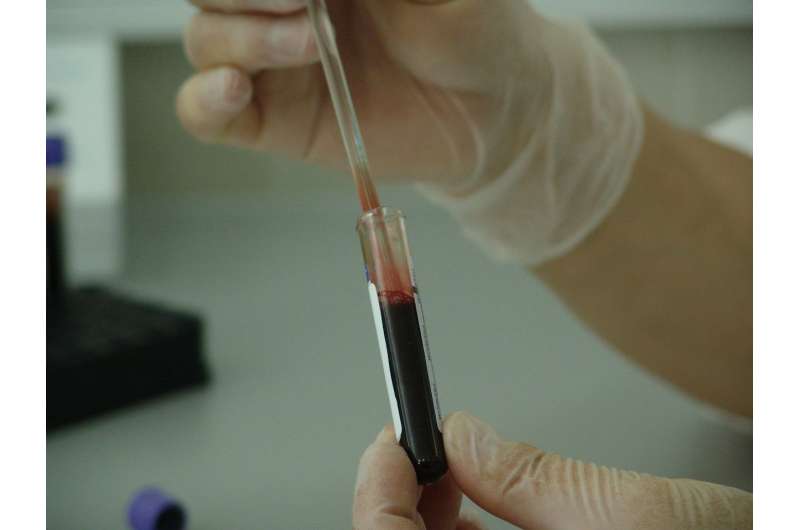New research sheds light on how skin cancer starts

Luis Ortiz-Rodríguez grew up on the beaches of Puerto Rico—surfing, swimming and running in the hot sand—and swears he had never put on sunblock a day in his life.
Then the day came when he peered through an ultrafast laser spectrometer at the College of Arts & Sciences at Case Western Reserve University and observed and recorded pre-cancerous lesions forming on the DNA within three picoseconds after exposure to ultraviolet light.
That's picosecond, as in one trillionth of a second.
"It's amazing how quickly this happens," said Ortiz-Rodríguez, a Ph.D. researcher in chemistry at Case Western Reserve University. "And it's true, when I was younger, I was always running shirtless on the beach or surfing and I thought sunblock was just for old people. Not anymore."
New research by Ortiz-Rodríguez and mentor Carlos Crespo, a professor and lead researcher in the The Crespo Group lab, reveals for perhaps the first time how quickly certain pre-cancerous lesions can form on the DNA of our skin when exposed to sunlight.
"That's important," Ortiz-Rodríguez said, "because we need and want to know how fast the mutations can form in the DNA, so that maybe researchers can find a better way to prevent skin cancer at a cellular level."
The 6-4 photo adducts mutation
Their research, recently published in the journal Nature Communications, shows how they've detected fast-forming mutations—called "DNA (6-4) photo adducts" by scientists." Photo adducts are lesions formed by a light-induced reaction in cellular DNA, which can lead to skin cancers. (The numbers 6-4 refers to the location of the relevant segment of DNA, see illustration at bottom).
Previous research published in Science by Crespo and collaborators has shown the other primary photo adduct linked to skin cancers, the thymine-thymine cyclobutane photo adduct, forms in less than 1 picosecond. But this work is the first to defined so precisely the formation mechanism of the 6-4 photo adduct.
They believe their findings will provide a stepping-stone toward a fuller understanding of how skin cancerous lesions actually form—a discovery that Crespo believes could have a big impact on the economics of treating and preventing skin cancer.
Skin cancer costs
With over 5 million cases diagnosed in the United States each year, skin cancer is America's most common cancer, according to the Skin Cancer Foundation, and the annual cost of treating skin cancers in the United States is about $8.1 billion.
The research also affirms that while most of us don't worry about the occasional sunburn because the discomfort fades in a few days, the longer-term damage stays hidden for decades, Crespo said.
"You're forming these mutations in your skin every second that you are exposed to sunlight, but enzymes in your cells repair more than 99% of them," Crespo said. "The problem is the less than 1% that remains un-repaired because they can accumulate in your body, often until you're much older and then they can lead to skin cancers."
The search for these precursors to skin cancer has actually been going on in earnest since the late 1960s, Crespo said. Until now, the timescale of its formation and the reactive-state precursor had eluded researchers around the world.
"Even though it is well established that formation of the 6-4 photo adduct is an initial pre-cancer lesion leading to skin cancer, we didn't fully understand the mechanistic aspects of it formation, so our paper provides important information in the characterization and understanding of these reactions," Crespo said. "Understanding the chemical processes could help us design better sunblock or maybe avoid the damage to the DNA before it occurs."
More information: Luis A. Ortiz-Rodríguez et al, Detection of the thietane precursor in the UVA formation of the DNA 6-4 photoadduct, Nature Communications (2020). DOI: 10.1038/s41467-020-17333-y

















